Did You Know These 8 Fascinating Wheat Facts?
Did You Know These 8 Fascinating Wheat Facts? Wheat is one of the oldest crops in the world to be cultivated. In fact, it was first harvested in 9600 BCE. It has withstood the test of time, but there are more fascinating wheat facts you may not know!
What is Wheat?
Wheat is a grain crop that has been used for thousands of years as a staple food in many parts of the world. It contains several nutrients, including protein, fiber, B vitamins, and minerals, like iron and magnesium.
In addition to being a staple food, wheat is also used in many other ways. It can be ground into flour for making baked goods like bread and pasta, or it can be made into whole-wheat flour, which is high in nutrients and fiber. Wheat is also commonly used as animal feed, and its fibers are often used to make products like paper.
Wheat has had an important role throughout human history, and it continues to play an important role today. Whether you enjoy eating wheat as part of your diet or using it in other ways, there’s no denying that this versatile grain crop holds a special place in our world.
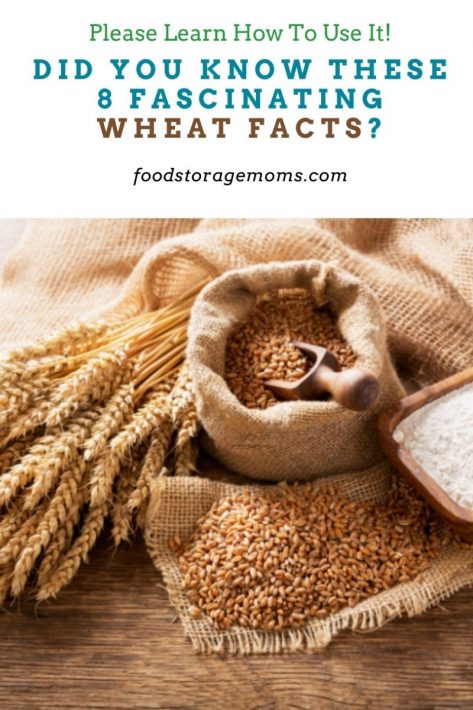
Items I Recommend For Wheat
- WonderMill Wheat Grinder
- NutriMill Wheat Grinder
- NutriMill Harvest Stone Grain Mill
- Bosch Bread Mixer
- Zojirushi Bread Maker
- Bread Pans
- SAF Instant Yeast
- Wheat Gluten
- Dough Enhancer
Fascinating Wheat Facts You May Not Know
Although we all probably use wheat flour, there are a lot of fascinating wheat facts you may not know. Here are a few of them:
1. Every continent except Antarctica Grows Wheat
Wheat is a very versatile crop. It can grow in almost any area or climate. It grows in regions as diverse as the US Midwest, the steppes of Mongolia, and Africa’s Sahel region.
2. It is a Sustainable Resource
Because wheat is produced on such a large scale, it can actually help to sustain our planet and its resources. For example, by planting more wheat crops in certain areas of the world, farmers can help reduce deforestation and protect wildlife habitats.
3. There are Many Different Types of Wheat
Did you know that there are over 50 different types of wheat? Some popular varieties include durum wheat (used for pasta), hard red winter wheat (used for bread), and soft white winter wheat (also used for bread).
Hard Red Winter wheat is higher in protein and gluten, which make them ideal for yeast bread. Soft wheat creates tender pastries like cookies or cakes, while hard varieties are often blended with all-purpose flour to produce a more versatile product that can be used for just about anything you might want to bake.
4. Most Foods are Made From It
If you look at the ingredients list of most packaged foods, chances are wheat will be one of the first items listed. That’s because wheat is used in so many different products, including bread, crackers, pasta, cereal, and even ice cream!
5. Pharaohs in Ancient Egypt were Buried with Wheat
It may seem strange now, but it was once considered a symbol of wealth and power. Because of this, ancient Pharaohs were buried with wheat as part of their funerary rites, along with other valuable items.
6. Wheat Takes A while to Grow
While wheat only takes four to six months to grow, it actually requires a lot of time and resources before that. Farmers must plant the seeds in the fall season, then wait for several months until they’re ready to harvest.
7. It’s The World’s Most Favored Staple Food
While there are many staple foods found throughout the world, wheat is by far the most popular. In fact, it’s estimated that over 2 billion people worldwide eat wheat as part of their daily diet.
8. Wheat Has a Long Shelf Life
Unlike some other types of crops, wheat has a very long shelf life. This makes it an ideal crop for products that need to be stored for long periods of time, like flour or pasta. With proper storage, wheat can last up to 30 years!
Wheat Nutritional Benefits
Another fascinating wheat fact is that wheat is packed with a lot of health benefits. In fact, we get about 20% of our daily carbohydrates from wheat. In a 3.5 ounce serving of unenriched whole wheat flour you’ll get:
- 15 grams of protein
- 10.6 grams of dietary fiber
- 71.2 grams of carbohydrates
- 38 milligrams of calcium
- 136 milligrams of magnesium
- 352 milligrams of phosphorus
- 376 milligrams of potassium
- 39 micrograms of folate
- 5.5 milligrams of niacin
- 0.5 milligrams of thiamin
In addition to wheat being a good source of carbohydrates and some vitamins, it has many benefits for your health:
Provides Healthy Carbs
Carbs may be deemed as bad for you, but they are actually vital to your diet. They:
- Provide Energy: Our bodies use carbs as fuel, which makes them an essential part of a healthy diet.
- Promote Healthy Digestion: The fiber in wheat can help to prevent constipation and promote regularity.
- Help Manage Blood Sugar Levels: Because of its low glycemic index, eating wheat may help to keep your blood sugar levels under control.
Contains Protein
Wheat is a good source of protein, which is important for supporting musculoskeletal health and promoting muscle growth. Every cell in your body contains protein.
Experts say that you should get 10-35% of protein from the calories you eat. And, the best proteins are from plants such as legumes, nuts, seeds, and whole grains.
It’s an Important Source of Minerals
Minerals are essential nutrients that our bodies need to function properly. They play a role in everything from our bones and teeth to our metabolism. Some of the minerals found in wheat include:
- Calcium: A necessary nutrient for bone health and helping to prevent osteoporosis.
- Magnesium: A mineral that plays a role in maintaining proper blood pressure and supporting healthy heart function.
- Phosphorus: Another mineral important for bone health, as well as other bodily functions, such as energy metabolism and the formation of RNA and DNA.
- Potassium: A mineral that helps to maintain fluid balance and prevent muscle cramping.
- Folate: A nutrient important for pregnant women as it plays a role in fetal development during pregnancy. It’s also necessary for DNA replication and cell division in the body.
It Contains Antioxidants
Antioxidants are compounds that help combat the effects of free radicals in our bodies. Free radicals can damage our cells and have been linked to chronic disease and cancer. Wheat contains a variety of antioxidants, including:
- Manganese: This mineral is an antioxidant that helps to prevent aging, but also plays a role in building bones and regulating blood.
- Copper: Another mineral with antioxidant properties that helps to keep your immune system healthy and promote proper growth and development.
- Iron: A mineral essential for carrying oxygen in the blood and preventing anemia.
- Selenium: A nutrient important for thyroid function, but which also has antioxidant effects.
High in Fiber
Fiber is another essential nutrient that is often lacking in the average diet. And, wheat has high fiber content, with one cup of whole wheat flour containing 21.3 grams of fiber – 80% of the recommended daily intake! Fiber can help to promote regularity, stabilize blood sugar levels, and even lower cholesterol levels.
Wheat Contains Gluten
On the flip side, wheat does contain gluten which can be a negative aspect. Gluten is a type of protein found in wheat, as well as other grains like barley and rye. For most people, gluten is not an issue. But, for those with celiac disease or gluten intolerance, it can cause serious problems.
Celiac disease is an autoimmune disorder that affects the digestive system. When people with celiac disease eat gluten, it triggers an immune response that damages the lining of the small intestine. This can prevent them from absorbing nutrients properly and cause a wide range of other symptoms.
If Wheat is so Important as a Food Source, Why is it in Short Supply?
There are a number of factors that can affect the supply and availability of various food products in our global economy, here are a few to consider:
Widespread Drought Conditions
Although floods and wildfires tend to get more media attention, right now many areas of the world are experiencing severe drought conditions. The majority of the western states have been on drought alert for many years now, and 2022 is no exception. Although the western states aren’t large producers of wheat, they do produce other crops that could become short in supply.
It is the mid-western states that have also seen drought conditions for many years. If you can’t properly water your crops, you won’t be seeing quality harvests in late summer and early fall. As with every other commodity, the rules of supply and demand come into play when shortages occur, thus the increase in prices for wheat and the products relying on wheat.
Since wheat is a major source of the feed we give our livestock, you are seeing significant increases in the cost for beef and pork
The challenge with droughts, you can’t just regulate a cure. For decades the water managers in all the states have planned for shortages and built dams to help provide a backup resource for agricultural water usage. In a drought, many of those lakes and reservoirs have become depleted and there isn’t enough water to go around for all the farmers needing it to grow crops and survive.
Most communities experiencing drought conditions are putting in place restrictions for your use of water, like watering lawns less frequently, watering during the night to limit evaporation, designing landscapes with more rocks and fewer plants, taking shorter showers, and more.
Shortages of Fertilizer
We’ve heard the term “perfect storm” when it comes to circumstances where a number of negative factors come together to adversely affect an outcome. That is the case when it comes to the world’s supply of the products needed to produce fertilizer. It turns out that it’s estimated that 40% of the world’s exports of potash come from Russia and Belarus. Potash is a critical component of most fertilizers produced.
The U.S. gets much of its fertilizer components from Canada, but with the sanctions on Russian exports, many countries are going to Canada for potash and other products, thus putting pressure on the prices U.S. manufacturers have to pay and then pass on to consuming farmers. Yes, our farmers can push to perform more crop rotations so the plants draw less of some nutrients from the soil, but that can only help so much.
And if the crop that is being left off the rotation schedule is wheat, the supply is reduced and the price goes up. You don’t just start producing urea, ammonium nitrate, nitrogen, and phosphorous, all needed to manufacture our fertilizers.
The Conflict in Ukraine
Much of the wheat supplied to European countries comes from Russia and Ukraine. It is estimated that those two countries provide over 30% of the wheat exports to Europe. If these countries can’t get their wheat from their usual sources, they will have to look elsewhere, including the U.S. With our supply of wheat already reduced due to drought and limited fertilizers to grow the crops, it only makes sense that we’ll be seeing less of and paying more for our wheat for the foreseeable future.
More About Wheat
- Wheat: What You May Not Know
- Why You Need to Store Wheat for Survival
- How to Use Wheat Grinders
- How to Mill Grains and Grind Wheat
Final Word
Wheat is an ancient grain that has been cultivated for thousands of years. It is a versatile crop that can be used in many different ways, and it plays an important role in sustaining our planet. It is also one of the things I recommend stocking and storing.
One of my favorite things is to make bread, and you need wheat flour to do that. I always have plenty of wheat in storage that I can grind into flour. I also have flour in large buckets so it’s handy to get them from my pantry when baking. If you have wheat and/or flour you are well on your way to feeling properly prepared. May God bless this world. Linda
Copyright Images: Wheat and Grains AdobeStock_303513176 by Nitr
My Whole Wheat Bread Recipe

- 1 1/2 cups warm water
- 2 tablespoons olive oil
- 1/4 cup or so of honey
- 1/2 tablespoon salt
- 1/2 tablespoon SAF instant yeast
- 1/2 tablespoon dough enhancer
- 1/2 tablespoon wheat gluten
- 1/2 tablespoon lemon juice
- 3-1/2 to 4 cups whole wheat flour
-
Start adding the ingredients in the order shown above with one exception into your mixing bowl…start with 2 cups of flour and slowly add more flour until the dough pulls away from the sides of the bowl. I use a Bosch Mixer.
-
I grew up making bread without a mixer. It can be done by hand. I grew up letting my bread rise twice so I still do that. Old habits are hard to break!
-
I mix it for 10 minutes in my Bosch. Cover with greased plastic wrap until it doubles in size.
-
Punch down and form dough into two one-pound loaves. I let the dough rise one more time with greased plastic wrap.
-
Remove the plastic wrap Bake the bread at (350°F) = (76°C) degrees for 27-30 minutes. If your pans are larger you will bake your bread longer. You will love making whole-wheat bread, I promise!!

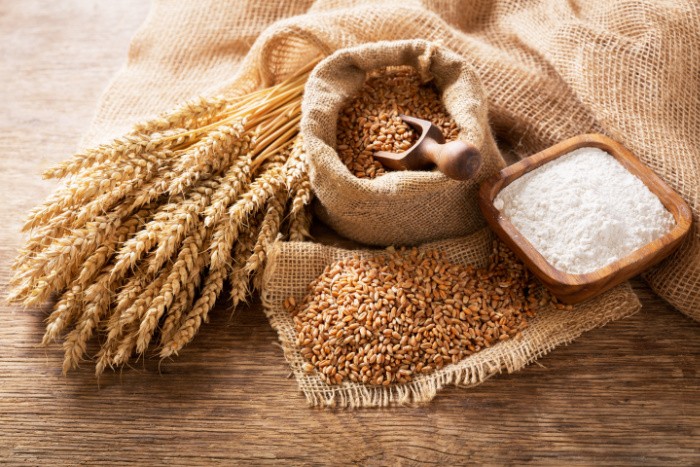

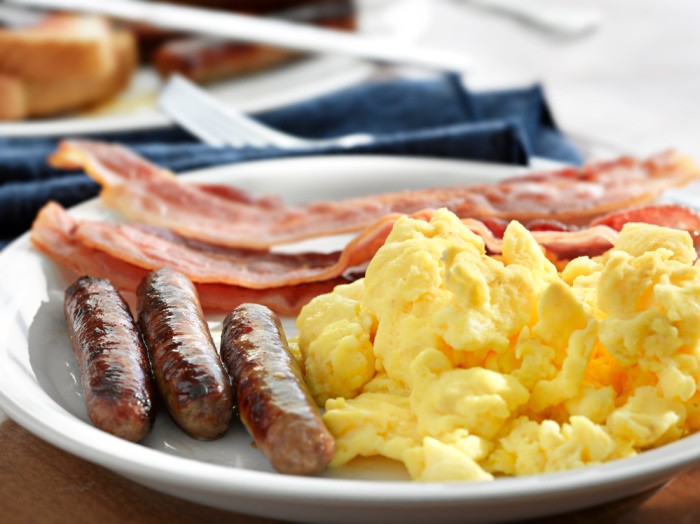
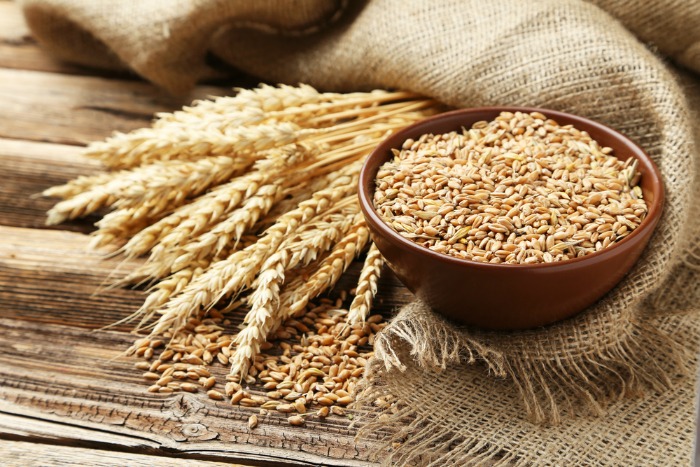
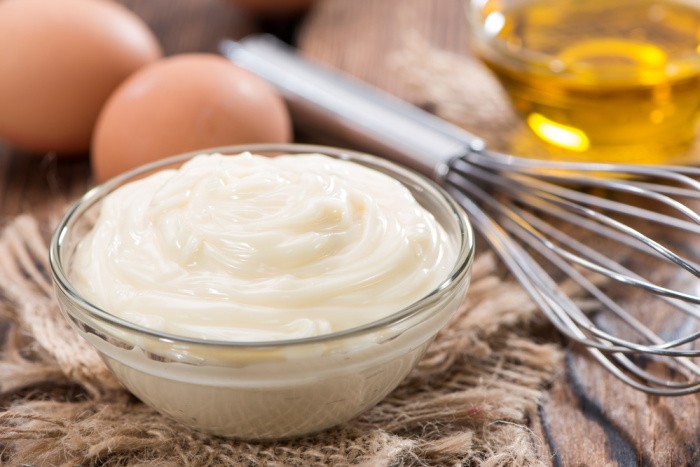


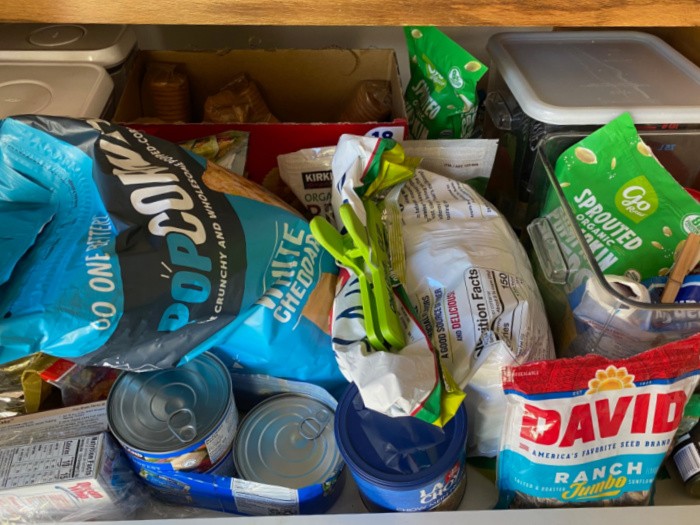
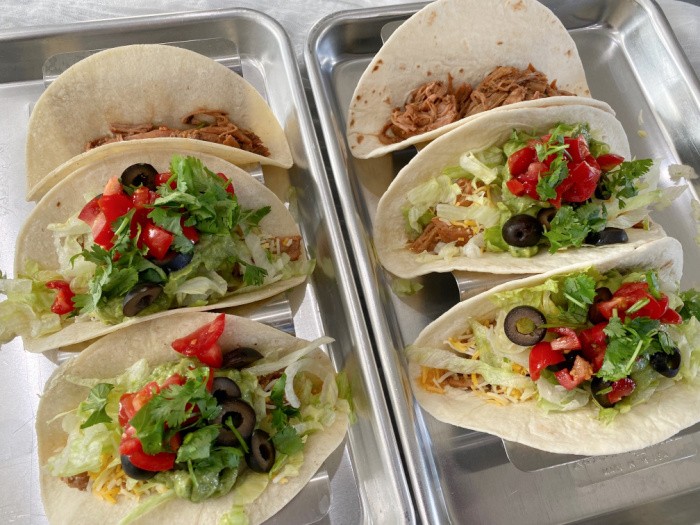

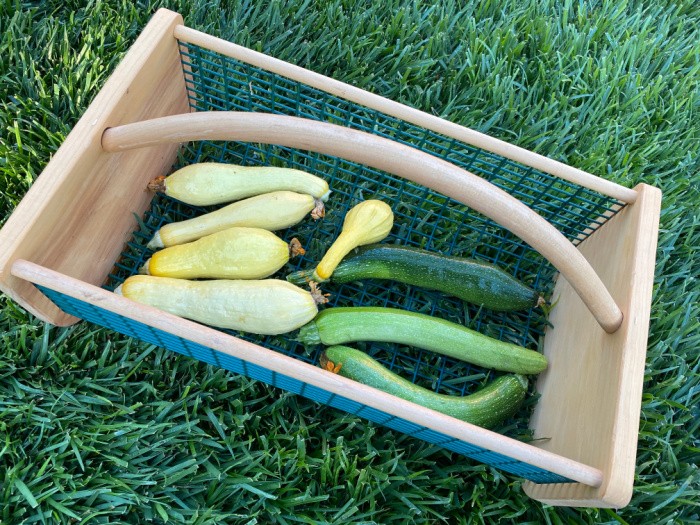










Another great and informative article. I completely agree with the tools you recommend and have many of them. If you can find one, a mortar and pestle will work to grind wheat if you don’t have a hand cranked model and the power is out. Lots of work though.
Hi Ray, oh yeah, a mortar and pestle would be great. Oh, the hand crank models are so hard to crank! I have one that I will use when the power is out. Linda
Linda,
I think the secret to using the hand crank models is to only put a small amount of grain in the hopper. Doing this you have to grind several batches to get as much as you need but at least you get the impression of progress being made. And at that they are still much better than a mortar and pestle.
Oh, the crow bar I’m thinking of is called a Gorilla Bar. I used one a lot when I was doing remodels, but it was also very useful as a pry bar when searching through tornado debris. And a hard hat is also a good idea when doing that. I’ve seen everything from hubcaps to entire cars lodged in trees after a tornado.
Hi Ray, oh thank you for the name of the crowbar. Yes, a hard hat and good work gloves too! Love it! Linda